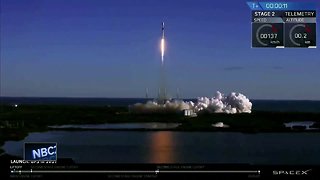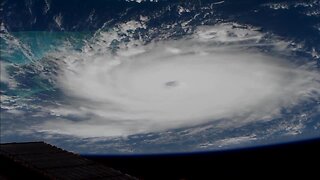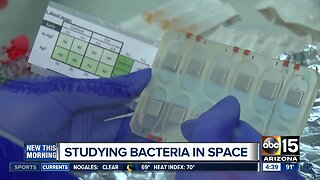Premium Only Content

Space Shuttle Model
"Once in space, the shuttle orbiter is your home for seven to 14 days. The orbiter can be oriented so that the cargo bay doors face toward the Earth or away from the Earth depending upon the mission objectives; in fact, the orientation can be changed throughout the mission. One of the first things that the commander will do is to open the cargo bay doors to cool the orbiter.
The orbiter must provide you with an environment similar to Earth. You must have air, food, water, and a comfortable temperature. The orbiter must also take away the wastes that your body produces (carbon dioxide, urine, feces) and protect you from fire. Let's look at these various aspects of the orbiter's life support system.
Our atmosphere is a mixture of gases (78 percent nitrogen, 21 percent oxygen, 1 percent other gases) at a pressure of 14 lbs/in2 (1 atm) that we breathe in and out. The space shuttle must provide a similar atmosphere. To do this, the orbiter carries liquid oxygen and liquid nitrogen in two systems of pressurized tanks, which are located in the mid-fuselage (each system has two tanks for a total of four tanks).
The cabin heat exchanger also controls the cabin temperature. It circulates cool water to remove excess heat (cabin air is also used to cool electronic equipment) and transfers this heat to a Freon exchanger. The Freon then transfers the heat to other orbiter systems (e.g., cryogenic gas tanks, hydraulic systems) and radiates excess heat to outer space.
Tthe orbiter must be kept clean, especially in space when floating dirt and debris could present a hazard. Wastes are made from cleaning, eating, work and personal hygiene. For general housecleaning, various wipes (wet, dry, fabric, detergent and disinfectant), detergents, and wet/dry vacuum cleaners are used to clean surfaces, filters and the astronauts. Trash is separated into wet trash bags and dry trash bags, and the wet trash is placed in an evaporator that will remove the water. All trash bags are stowed in the lower deck to be returned to Earth for disposal.
To change the direction that the orbiter is pointed (attitude), you must use the reaction control system (RCS) located on the nose and OMS pods of the aft fuselage.
You must be able to talk with flight controllers on the ground daily for the routine operation of the mission. In addition, you must be able to communicate with each other inside the orbiter or its payload modules and when conducting spacewalks outside."
-
 0:39
0:39
KGTV
6 years agoWine in space
16 -
 3:56
3:56
WMAR
6 years agoCooking in Space
18 -
 0:43
0:43
WFTS
5 years agoHurricane Dorian from Space
264 -
 0:08
0:08
namvip1937
6 years agothe cat model
10 -
 1:57
1:57
WFTS
6 years agoSpace X rocket launch
78 -
 0:43
0:43
WGBA
6 years agoSpace X Launch
88 -
 0:40
0:40
WFTS
5 years agoHurricane Dorian from space September 1
99 -
 2:07
2:07
KNXV
6 years agoStudying bacteria in space
10 -
 1:09
1:09
Strelka90
6 years agoPreparing a cat for space flight
14 -
 3:17
3:17
PBS_ItsOKToBeSmart
6 years agoSpace Sounds
10